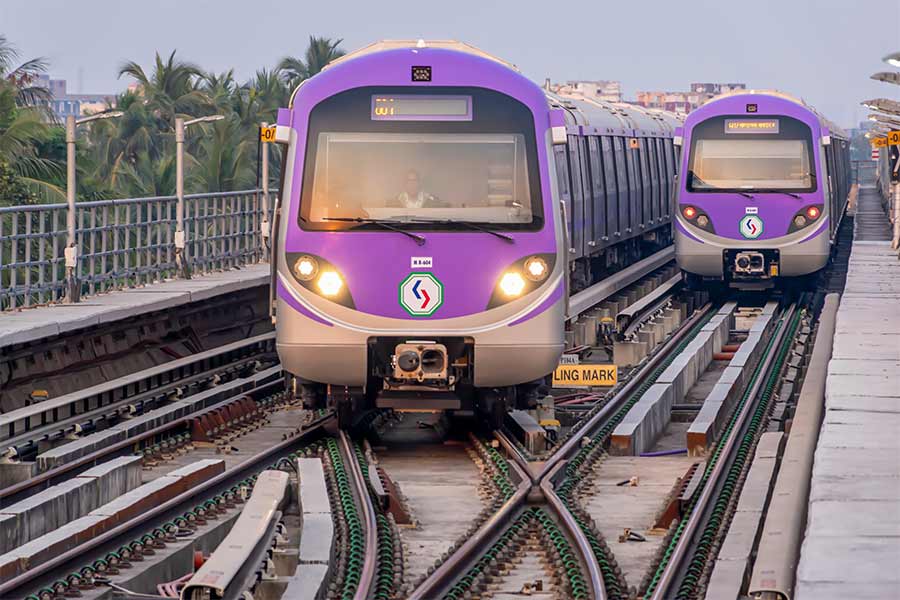Metro Railway is planning to install a set of batteries that can chug a train stranded inside a tunnel on the north-south corridor (Blue Line) to the nearest station during a power failure.
The Battery Energy Storage System (BESS) will be installed at the sub-station near Central station, said an official. CESC supplies power to Metro Railway through sub-stations.
“This new system, an amalgamation of inverters and advanced chemistry cell (ACC) batteries... has been designed in such a way that the electricity generated with it can be used to haul stranded rakes at 30km/hr speed from mid-tunnel to the next station in case of any power failure. Packed trains will not have to wait in underground tunnels or on the viaduct for restoration of power supply in case of a disruption,” the carrier said in a release on Sunday.
The minimum distance between two stations on the north-south corridor is around 700m and the maximum over 2km.
Advanced chemistry cells can store electric energy as electrochemical or chemical energy and convert it back to electric energy when needed. The Centre is counting on the new-generation technology to boost the country’s energy storage infrastructure.
The National Programme on Advanced Chemistry Cell battery storage was approved by the Union Cabinet in May 2021 with a budgetary outlay of Rs 18,100 crore.
The Metro project, approved by the Railway Board, is part of the national programme. Metro Railway is going to be the first zone in Indian Railways to implement the system, the release said.
The new technology involves lithium iron phosphate (LiFePO4) batteries, which are ideal to replace the older lead-acid batteries, said a Metro official.
“The new batteries take one-seventh of the space that the lead-acid batteries take. They are almost seven times lighter and much more powerful than the older lot. They are energy efficient and free of the safety hazards that are associated with lead-acid batteries,” the official said.
In case of a power failure, the electrical traction that a stranded train will need to reach the nearest station cannot be provided with one lead-acid battery.
“We will need many such batteries. Apart from storage concerns, there is a high gas emission risk. So, it is not feasible. The lithium phosphate batteries will solve the problem,” the official explained.
Each BESS has a lifespan of around 14 years and needs around 106sqm of space for installation, the note from the carrier said. It requires very less time to get fully charged.
It is financially viable because it can save the peak-hour power demand. The battery can also be used as a storage system at night and then the stored energy can be used during the rush hours in the day.
The carrier has, through an open-bidding process, placed an order for the first such BESS unit with the Indian subsidiary of a Taiwanese power electronics company.
The unit will have a capacity of 4MW. Once installed at Central sub-station, it can be used to power a train anywhere between Dum Dum and Tollygunge.
“Metro Railway engineers have prepared the blue-print to supply 4MW power generated by this battery from a particular location to any station between Dum Dum and Tollygunge of the north-south corridor,” said the carrier.
“The first BESS unit is expected to come up at the Central substation by the end of this year. In the long-run, we plan to install six more such units,” said another Metro
official.











